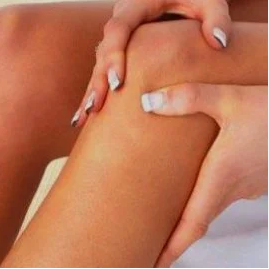
The knee pain is a common symptom of the body, signaling problems in the body, the occurrence of reports of the disease in the joints, or just the increased load on the legs.
It is hard to find in one person, never experiencing any pain in the knees, at a certain period in one's life. The discomfort, hassle, or different intensities of pain in the knee joints, occur in both adults and children, for a variety of reasons. The older the person is, the higher is the probability of the occurrence of reports of a number of diseases, the first sign that it's a pain in the knee. This is due to the age and characteristics of the body: the slow-down in metabolic processes, the wear and tear of the fabric of the articular cartilage in the joints, as well as other issues with the system, the motor of the machine, the blood vessels and the nerves.
Due to the complex anatomical structure, set of structures, and to experience, significant charges, and a lot of times, and it is in overload, the knee joints are the most vulnerable. Damage to any of the sv structure, such as, for example, the synovial pouches, it leads to the violation of the thrust as a function of the knee joint and therefore the pain syndrome. The ligaments and the meniscus are considered to be the most vulnerable, they are wounded in 80-85% of cases.
Anatomical construction of the knee
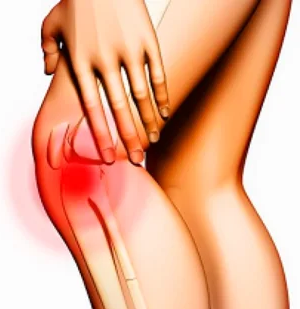
The knee joint is the articulation of the knee joint, the distal end of the femur, with the two condyles, and sobcôndilos, a tibial tubular bones, muscles, nerves, blood vessels, ligamentous apparatus of the knee cap (patellar), joint capsule and the meniscus.
The joint of the knee is one of the major joints of the body. From the above it is up to the thigh. The articular surfaces of its lateral (outer) and central (internal) condyles articulate with the patella and a bone in the tibial. Meniscus, which represents the connective tissue and cartilage serve as shock absorbers for the joint. Thanks to them, the allocation is rational, the weight of a person on the tibial plateau and increase the stability of the joint. The slim, two-headed, paliperidonesee and other muscles to fine-tune the capsule-ligament structure, while providing the physical activity on the knee joint.
The elements of the tribe are linked to each other in a multitude of bands. The inside of the joint, there are two bits of a link – back and front. Podmyshalsky bedernau, the bones are joined together with a fibulares and tibial bones, collateral ligaments. The bar popliteal hill is located at the back of the bursa of the joint of the knee. A series of cavities of the joints we highlight the main capsule of the joint tissues, it does not have a communication with the joint. The supply of the elements of the knee joint, is performed thanks to a network of blood-vessels, and the innervation – nerve fibers.
The cause of the pain in my knees
There are many causes of pain in the joints of the knees, which can be divided into several groups.
Shocking defeat by the elements of the knee joint:
- An injury to the knee. As a result of the rupture of the vessel occurs, the location of the bleeding in the soft tissues of the joint. Redness, swelling, failure of the nerve endings leading to pain and an inability to move.
- Partial or Total rupture of the ligament. The most commonly diagnosed, in part, of a violation of the integrity of the internal lateral ligament, resulting in excessive eversion of the leg to the outside.
The outside of the torn ligament, less in comparison with that of the interior. This is due to the strong deviation of the leg that's on the inside, when you display legs, for example. The rupture of the cruciate ligament today, inevitably, is accompanied by a hemarthrosis.
A full rupture of both ligaments and is often combined with a lesion to the articular pouches, tearing up inside of the meniscus. This trauma leads to excessive mobility of the knee joint, accompanied by pain, the intensity of which depends on the extent of the disruption.
- Hemarthrosis joint of the knee – rupture of the blood in the joint cavity. It is a traumatic and non-traumatic in nature. Traumatic hemarthrosis can occur and when it breaks out of the injury, complete or incomplete, breaks in joints, intra-articular fracture, injury to the area of the knee joint. Non-traumatic option is one of the symptoms of the disease, which is characterized by increased fragility of the walls of the blood vessels or to disturbances in the coagulation system of the blood. These include hemophilia, scurvy, a severe form of hemorrhagic diathesis. That may have accumulated in the cavity of the joint from the blood, compression of the tissue, disrupting the blood flow to them. The special pigment – hemosiderin – has a negative effect on the tendon, hyaline cartilage, synovial sac, resulting in a loss of elasticity. The result of an injury to the joint the bursa is a swelling of your tissue, and increased production of joint fluid. The result of the repetition of bleeding becomes a benefit and the destruction of the joint.
- Patella miniscope – a violation of the integrity of the menisci of the knee joint. When the lateral aspect, between the outer shape gets the stack trace as a damaged meniscus, when the medial – to- house. This is one of the most common, but it is hard to diagnose injuries to the knee joint. In the area of risk for the disease, they are not the only athletes who take part in intense workouts, but what about the ordinary people. A torn meniscus can occur from a big unusual move when you rotate the trunk, a display stand, a serious impact on the tribe.
- Dislocation of the patella – pathological dislocation patellar. The injury is diagnosed in about 0.7% of the cases out of the total number of tasks. It occurs more frequently in the outer dislocation, at least of the internal, very rarely, a vertical or a torsion bar. When you're a fully dislocated patella is defined on the lateral (outside) condyles, with the full on – off of the lateral condyle.
- Open and closed fractures of the knee, the top of the stage, in the bones of the lower leg, or lower than, department of bedernau bones. Of such injury, often combined with damage to the soft tissues of the knee, causing a massive hemorrhage, the excessive mobility in the area of the knee joint, the strain in the.
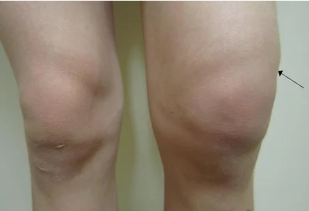
Inflammatory and degenerative diseases-degenerative diseases of the articular elements of the knee joint:
- Arthritis – the inflammatory loss of the knee-joint. A mechanism similar to that of the development of the pathology seen in osteoarthritis, disease, Spondylitis, and rheumatoid arthritis, gout (the deposition of urate in the joints).
- Osteoarthritis (gonarthrosis) with the loss of the knee-joint of non-inflammatory nature, affecting the entire structure and causing a severe degenerative changes.
- Bursitis the inflammation of the synovial de la bourse leads to pain flexion-extension movements of the knee joint.
- Periarthritis of the ligaments of the knee – inflammation of the capsule, goose legs, in the knee, tendons, ligaments, and muscles and ligaments that surround the joint. When the pain occurs especially during descent of the ladder, especially with a heavy load, and it is concentrated on the inner surface of the knee joint.
- The chondropathy patellar degenerative-necrotic changes of the articular cartilage in a joint (back side) of the surface of the patellar. The extent of the damage may be different areas of a light loosening up of the cracks and a complete grind.
- Chondromatous – a serious chronic disease caused by dysplastic process with a nursing home the renaissance phase of the membrane and the articular shell of the cartilage – gondrom. It cannot be ruled out, the ossification of individual cartilage in the body.
- Cyst a Baker – is the formation of a dense, elastic, rounded tumor on the education of popliteal fovea, which is located on the opposite side of the ball. The cyst is clearly well on the flat, able to back. Cause discomfort, pain in the popliteal. When a range of significant compression of the blood vessels and the nerves, which results in a violation of the nerve supply and circulation.
- The disease is Goff – the disease, which is accompanied by a loss, and a better regeneration of the adipose tissue located around the joint of the knee. Pinched, swelling, and other damage caused by the fat cells – adipocytes – end replaced by dense fibrous tissue. As a result, the indicator of the function of the "fat hook" is broken down, the fatty tissue become if you are not able to take on an absorbent paper towel.
- The disease of osgood–Schlatter's disease – the pathology, which is characterized by necrosis of injured portion of the tibia. It is diagnosed in adolescents between 10 and 18 years, who are involved in sports activities. Below is the patellar pops the node unhealthy if left untreated, it leads to the restriction of the movement of the foot in either full or restraining by force, as well as the nutrition of the muscles.
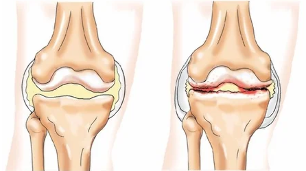
The diseases for which it is possible for radiating pain in the region of the knee joint:
- Coxarthrosis hip – the chronicle of the defeat of the hip joint, which is accompanied by progressive deterioration and degenerative changes. Often the pain spreads to the outer surface of the thigh up to the knee or below.
- Neuropathy of the sciatic nerve – a non-inflammatory loss of nerve resulting from the compression of the contractions, or spazmirovannah of the blood vessels. This nerve reaches to the feet, which begin at the waist, and moving with the tail bone and the pelvis. Blockage at any point along the lead to the decrease of the sensitivity, or throbbing pain.
- Treatment extra-articular defeat of the soft-tissue, non-inflammatory character, with a range of symptoms, such as arthralgia, muscle weakness, depression, and the t. d. d.
Some of the systemic disease causing the pain in his head, in his lap:
- Osteoporosis is a bone disease in a system, the chronicle of current, progressive, and capable of changing the mineral composition and bone density. "Washout" of calcium from the bone, resulting in fragility. The process is accompanied by a LOMOtOh or pain, pain in the limbs.
- In tuberculosis of bone. Tuberculosis-the defeat of a phase of bone, resulting in a constant, sharp pain in his head.
- The osteomyelitis is a disease of an infectious-inflammatory in nature, affecting all of the structural elements of the blood. A specific result, such as, for example, a tb patient, and a non-specific, the most coccal, osteomyelitis, makes flushing of the skin, swelling, local pain in the bones and the muscles, a feverish temperature.
- Some of the infectious diseases. The syndrome of the news (Reuters), in addition to be involved in the process of orogenytobjectivos of the urinary tract, and the mucous membrane of the eyes, and are amazed at the joints. One of the manifestations of Lyme disease is arthralgia.
The types of aches and pains in the knees,
Depending on the etiology, nature and severity of the pain can be a different story.
- Nagging. When the arthritis, osteoarthritis.
- An acute, very strong. When it fractures, the elements of the knee, torn ligaments, ostrom bursitis, injury to the knee is the deterioration of the menicopatAI, defopmeRtemyuschem win.
- Ever. During the execution of the defopmeRtemyuschem artrosase, an injury to the meniscus.
- Bur. When OSteomeelete.
- It becomes weaker. When the bursitis in the OStenohondrite.
- The fire. When the compression of the sciatic nerve, ttembeRKtemleZnom in the process of the bone.
- PROStReleVAyuschandEu. When jamming on the split in the trunk.
- The pain when I walk. When the KISte and Baker, bursitis, arthritis, rnonartrosase, periarthritis of the.
- The pain in the rest. When the gout arthritis.
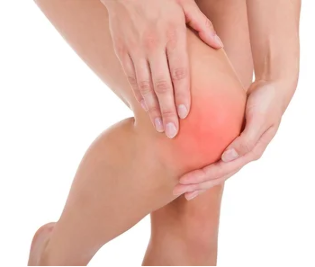
The diagnosis of the disorders causing pain in the knees
Fizikalna search:
- the collection's history and complaints.
- a visual examination with palpation of the right knee.
Laboratory tests:
- the biochemical and clinical examination of the blood.
- serological examination of the blood.
- immune system: an examination of the blood.
- ReinmandtnolnogeheSKee experimentation;
- tanqueterinolnogeheSKeth the analysis of the oxygen in the synovial fluid.
Non-invasive tools, techniques.
- arthroscopy;
- joint aspiration programmes;
- the puncture biopsy of bone.
In a non-invasive diagnostic tools:
- x-ray of the knee joint;
- dencometometriEu;
- an ultrasound scan of the joint;
- Magnetic resonance imaging or computed tomography.
For the treatment of pain in the knees
If the pain in one or both knees, netRaumateheSKOh the nature of the occurrence is reported, you should first check with your family doctor, who, on the basis of the patient's complaints and results, the objective of the review will then refer the patient to a specialist – optnopedtem, Reinmandtnolnogtem, recital of or a neurologist. While any injury to the knee, you should consult with a doctor or tRaumatnolnortem-optnopedtem.
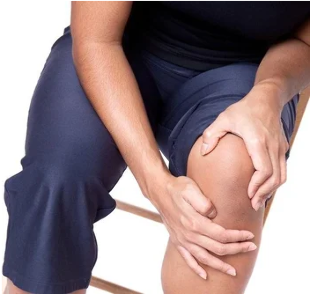
The treatment is in each and every case is different and it depends on the cause of the pain, that is, the type of injury or illness. For each and every illness has its own treatment regimen. But, to begin with, the patient needs to follow a few basic rules:
- to significantly reduce the length of the walks, and to walk in during the day;
- the athletes of the term (to the rescue) to abandon the practice, and the common people of a race or jumping;
- when strengthened, the pain, the complete abandonment of the movement, lay flat on the knees, the cuff of the attachment of the elastic band;
- use a brace or bandage to immobilize the knee joint;
- when the wound is cold-in-place tRandinmeRtemyuschegno impact.
Rheumatoid arthritis, psoriatic arthritis, and the system is self-immune to the disease, are in need of a serious, integrated treatment is carried out in the course of the month. The basic therapy consists of a drug, immunosuppressive, non-steroidal anti-inflammatory drugs and steroidal drugs, drugs-of-gold-and-t-d.
In the treatment of noninfectious using pain relievers and anti-inflammatory medication. If you have an infection, a course of antibiotics. Medical processing grants shall be carried out to eliminate the excess of oxygen in the liquid in the synovial cavity, and/or the administration of a corticosteroid. The chronic inflammation of the bursa that helps to get rid of the operation – excision of the surgical synovial pouches.
When defopmeRtemyuschem read effective inntemtricomtemcomtandinnse injection glYuparanoparaopteparaOSteRnoeds, the prolonged intake of NSAIDS, and hondreproteparatops. To alleviate the pain threshold of the syndrome, and topically prescribe how this goes with demeparacomedom or bishopitom, creams and gels with anti-inflammatory action. It helps to massage fezenopRnoTSedtemRs of the art treatment. The serious injury of a knee in need of surgical replacement of the joint.
For the treatment of osteoporosis, it is a return to receive a bisphosphonate, cálciotnonens, calcium supplements, vitamin D, and t. d.
The treatment of an injury can be conservative or surgical. Conservative therapy consists of the application of analgesics, NSAIDS, hyaluronic acid, hondreproteparatops. But, initially, they produce re-position the joint.
Types of services:
- meneSKeparatomeEu;
- a partial (incomplete) meneSKeparatomeEu;
- the transplantation of a meniscus;
- arthroscopy;
- arthroscopic stitching of the meniscus.
When any injury of the knee-after the course of treatment, it is very important to the rehabilitation period that must pass under the control of the ReabeletAloha, or an orthopaedic surgeon. The doctor will be in a program for the recovery of function in the joints. The main methods of rehabilitation for post-operative are considered to be the massage and treatment facility. Also, they are effective in a special class of machines, which will gradually develop in the joint of the knee.












































